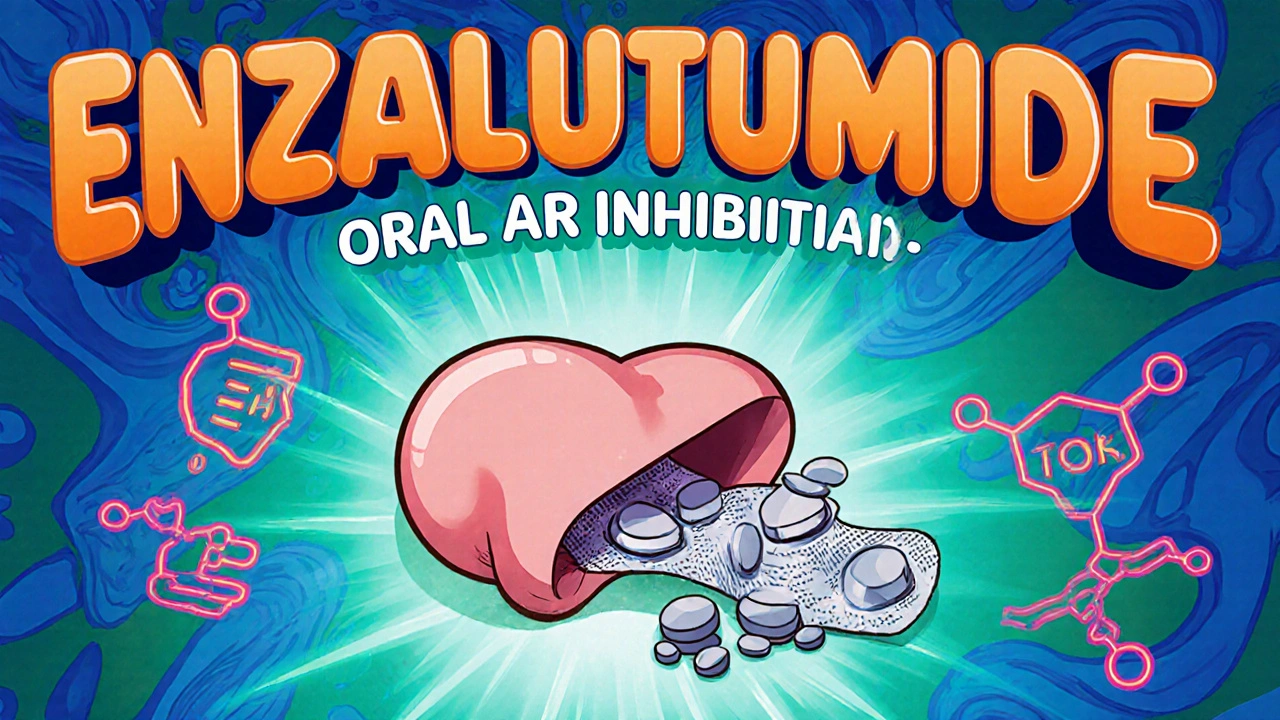Androgen Receptor Inhibitor – What It Is and Why It Matters
When working with androgen receptor inhibitor, a class of drugs that block the activity of the androgen receptor and prevent androgens from driving cell growth. Also known as anti‑androgen therapy, it is a cornerstone in treating prostate cancer, a malignancy that often relies on androgen signaling for progression and other hormone‑sensitive tumors. Over 1.4 million men are diagnosed with prostate cancer each year worldwide, and a large share of them will eventually need a treatment that shuts down the androgen pathway. That’s where an AR inhibitor steps in – it offers a way to keep the cancer from using testosterone and dihydrotestosterone as fuel, even after surgical or medical castration. The result is slower disease growth, delayed metastasis, and often a longer, healthier life. Below we’ll unpack how these drugs achieve that effect and what you should know before they’re prescribed.
How AR Inhibitors Work and Who Benefits
The target of these drugs is the androgen receptor, a protein inside cells that binds testosterone and dihydrotestosterone to trigger gene expression. When the receptor is activated, it travels to the cell nucleus and switches on genes that tell the cell to divide, survive, and migrate. An AR inhibitor binds to the same pocket on the receptor, either blocking the natural hormones from attaching or preventing the receptor from changing shape. This stops the downstream signaling cascade that normally drives tumor growth. The blockage works in both early‑stage disease, where the tumor still depends heavily on hormones, and in castration‑resistant prostate cancer (CRPC), where the cancer has learned to survive low hormone levels but still needs the receptor’s activity. Researchers have identified several resistance mechanisms – such as receptor mutations that change the binding site – and newer inhibitors are being designed to fit those altered shapes. Understanding the biology helps doctors choose the right drug and anticipate when a tumor might outsmart the treatment.
Clinically, AR inhibitors fall under the broader category of antiandrogen, drugs that compete with natural androgens for receptor binding or reduce receptor expression. The most widely used agents include enzalutamide, apalutamide and darolutamide, each approved after large phase III trials showed they improve overall survival and delay disease progression. For example, enzalutamide extended median survival by about 14 months in men with metastatic CRPC, while apalutamide proved useful in non‑metastatic disease with high PSA levels. Darolutamide stands out for its lower risk of crossing the blood‑brain barrier, which translates to fewer central‑nervous‑system side effects. Common adverse events across the class are fatigue, hypertension, and rare seizures; drug‑drug interactions are also a key concern because many patients take multiple chronic medications. Choosing the right agent therefore depends on the patient’s heart health, seizure history, other meds, and the specific disease stage. Ongoing trials are testing next‑generation inhibitors that aim to bind mutated receptors and achieve better brain penetration, keeping the field dynamic and promising for patients who develop resistance.
Androgen receptor inhibitor therapy continues to evolve, and staying up‑to‑date can mean better outcomes for patients. Below you’ll find a curated collection of articles that break down drug comparisons, side‑effect management, dosing strategies, and the latest research headlines. Whether you’re a healthcare professional, a patient navigating treatment choices, or just curious about how hormone‑blocking drugs work, the posts ahead offer practical insights you can apply right away. Dive in to explore the full spectrum of information we’ve gathered on this pivotal class of medications.
Addressing Common Concerns and Misconceptions About Enzalutamide
Clear answers to the most common worries about enzalutamide, covering side effects, drug interactions, effectiveness, resistance and practical management tips.
